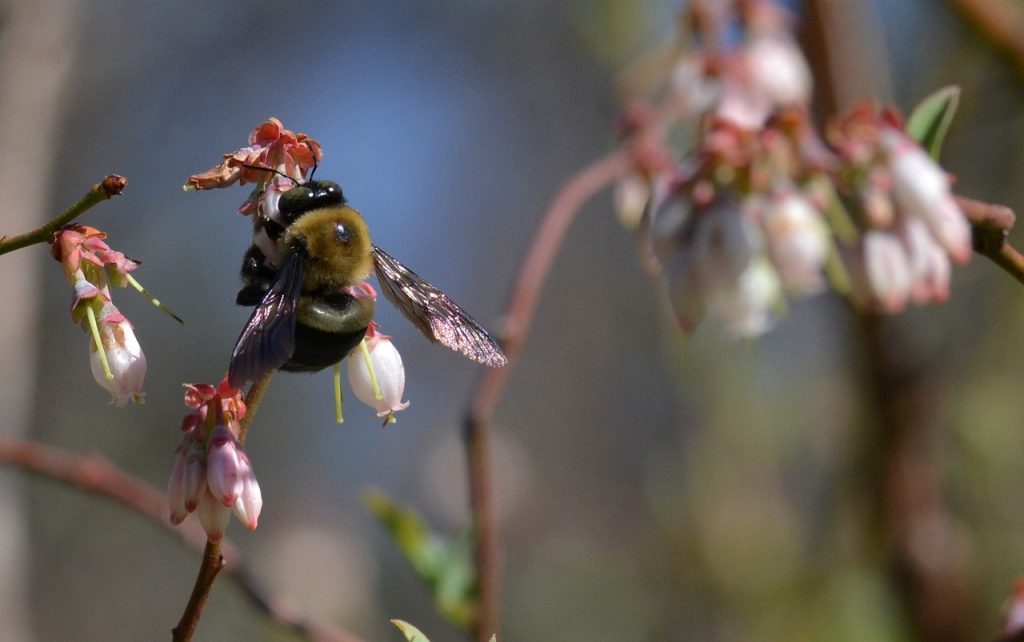By Karla Arboleda
University of Florida (UF) researchers are working to establish honeybee hive recommendations specific to Florida blueberries.

Right now, Florida blueberry growers rely on honeybee hive recommendations from research based in other states. Rachel Mallinger, an assistant professor in entomology at UF and part of the research team, said the amount of honeybees available to pollinate blueberries is important.
NEED FOR BEES
“Without bees, you essentially get very low yields,” Mallinger said. “In some cultivars, you will get berries, but they’ll be very small. Other cultivars will basically set no fruit at all.”
Currently, blueberry growers are recommended to have four honeybee hives per acre. In order to improve honeybee hive recommendations, Mallinger and her team are looking into what creates the best environment for successful blueberries.
“One of our main goals is to be able to tell Florida growers, ‘This is the density of honeybees you should be able to use either on … a per yield or per flower basis,'” Mallinger said. “A lot of the recommendations right now are a certain number of hives per acre, and even that isn’t based on any research.”
20 FARMS UNDER STUDY
Mallinger and her team are currently studying 20 Florida blueberry farms and their current habitation of honeybees.
“Ten of the farms used a relatively low density of honeybee hives per acre, and 10 used a relatively high density,” Mallinger explained. Her team will examine visitation rates, pollination, fruit setting, blooming period and fruit development period. “Just from some of our observations, some of the farms that bring in the highest density of honeybees don’t necessarily have more honeybees per flower,” she said. “We’re hoping to get a better handle on that for next year.”
BUMBLEBEES ALSO ON THE AGENDA
In addition, the team hopes to gather data on bumblebees and the effects their pollination has on Florida blueberries. They hope to have results and recommendations ready as early as summer and fall of next year.
“Some of the growers use no bumblebees, and other growers use up to four hives per acre. We’ll hopefully be able to get a sense for whether or not bumblebees also increase yield,” Mallinger said, noting the variability in potential blueberry success. “If we find that bringing in more bees doesn’t necessarily result in more visits to flowers, then the next step would be to figure out why.”









